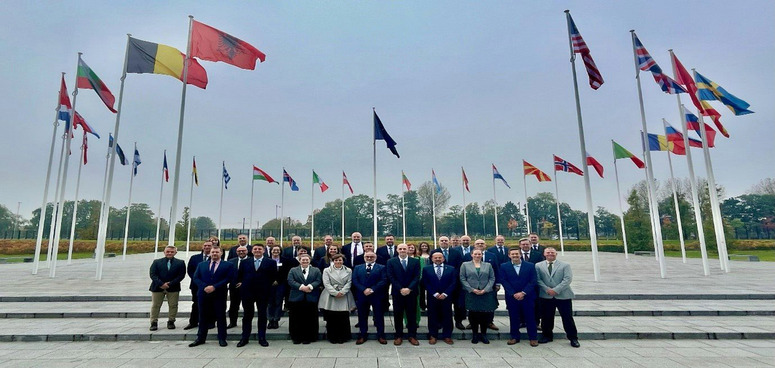Meteorological and Oceanographic Military Committee Working Group
International Military Staff
NATO forces operate in multiple environments and geographical locations, and rely on knowledge of the current and forecast physical environment to enhance the effectiveness of NATO’s multi-domain operations, missions and activities. Meteorological and Oceanographic (METOC) information, including space weather and climatology, is key to military decision makers as it provides commanders and their staffs with situational understanding of the physical environment's impact on the employment of friendly and adversary warfighting capabilities, enabling commanders to anticipate and exploit favourable environmental windows of opportunity. This is critical in achieving cognitive superiority in planning, executing, and sustaining safe, effective and successful NATO activities.

Representatives from the 14th Meeting of MCWG (METOC) in Oct 24
The Meteorological and Oceanographic Military Committee Working Group, known as MCWG (METOC), is a functional specialist forum composed of over 60 National and NATO Command Structure personnel (both military and civilian) currently from 26 Nations that draw on extensive experience and expertise to provide METOC policy guidance and advice to the Military Committee, the Strategic Commands and NATO Nations. Together with three subordinate technical panels, Military Meteorology (MILMET), Military Oceanography (MILOC) and Military Space Weather (MILSWx), they provide subject matter expertise to ensure National and NATO assets are used efficiently and effectively.
As climate change continues to reshape NATO’s strategic environment and creates challenges across all domains, MCWG (METOC) is focused on enhancing NATO’s ability to understand and adapt to the ever-changing climate. In addition to predicting the more frequent extreme weather events, Alliance military forces will need to operate in more extreme and demanding environmental conditions and this includes the increasingly accessible and strategically important High North region. While the METOC community has refined its ability to observe, sense and predict environmental conditions across the mid-latitudes, the rapidly melting sea ice has shifted attention northward to Arctic forecasting and associated environmental impacts.
As such, the MILMET technical panel is focused on advancing terrestrial weather initiatives across the High North. In cooperation with numerous NATO Nations, work is underway to bolster sensor networks, refine algorithms for forecasting ship icing, evaluating tactical decision aids, and enhancing the knowledge required to accurately predict and track polar lows which pose a significant threat to operations across the Arctic.
Furthermore, the auroras, while beautiful, are a visible manifestation of space weather. Most common over the Arctic, these areas are particularly sensitive to severe space weather impacts due to the orientation of the Earth's magnetic field. In the Polar Cap regions, near the geomagnetic poles, magnetic field lines are open, allowing solar wind and energetic particles to enter the upper atmosphere, causing ionospheric disturbances. These disturbances, which impact all operational domains, negatively affect communications, global navigation, satellite systems, disrupt power grids and increase radiation exposure to high flying aircraft.
Therefore, having a comprehensive sensor network in these areas is critical to refining space weather predictions and supporting operational decisions. This is exactly what the experts of the MILSWx technical panel are currently working to address. Efforts involve collaboration among multiple NATO Nations and scientific institutions to share space weather models so as to enhance forecasts of impactful space weather, while simultaneously working to understand criteria for assessing associated impacts.
With NATO’s interest and involvement in the High North continually increasing, many unique and complex challenges await the METOC community. From the sparse observation network, to limited satellite coverage and poor numerical models, advances in this region will demand innovation, resilience, and international collaboration. MCWG (METOC) and its technical panels will be continually engaged and working to ensure METOC is a force enabler for NATO operations.
(Article provided by IMS O&P)
